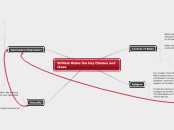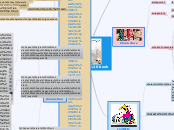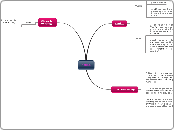a Ishmeet Kaur 9 hónapja
61
Feminist Theory
Liberal feminism and radical feminism represent two distinct strands of feminist theory with different approaches to achieving gender equality. Liberal feminism focuses on working within existing societal structures to ensure equal opportunities for women, primarily through education, policy changes, and legal reforms.
Megnyitás
Feminist Theory Common Goals Encourage sexual and personal freedom Make sure both men and women can express themselves freely and follow their interests, even if it goes against societal expectations Fight the stigma around women being sexually active and ensure access to safe abortion services Ensure women have the right to control their own sexuality and reproductive choices End sexual violence Work to prevent sexual violence against women and support those who have been affected End gender and systemic oppression Challenge the systems like capitalism and patriarchy that keep men in power and create gender inequality Fight the the ways women are not just treated unfairly but are also controlled, exploited, and sometimes abused by men Work towards gender equality Fight against laws and norms that result in women earning less and having fewer opportunities in education and careers Understand that women's experiences are different from men's and often unfair Show the social issues and problems women face The Basics Key facts Different types of feminist theory focus on different ideas and experiences Feminism doesn’t have one single definition; it changes with different experiences Patriarchy is a system where men dominate and oppress women Gender roles and inequalities are created by society Inequalities can lead to conflicts between genders Awareness that women are often held back due to the power/status system Key focus areas Power differences Gender roles and differences Economic equality Treating women as objects Sex and gender discrimination Focuses on economic, civil, and ideological disparities between genders. Social, academic, and cultural movement Marxist and Socialist Feminism Adds economic and social justice to fighting for women's rights Challenges capitalism that makes gender unfair
Pushes for economic systems that value women's labour
Supports a socialist revolution to make a fairer government that helps families and respects women's ideas and contributions Achieving gender equality requires ending capitalist exploitation of women's labour Believes capitalism benefits from keeping women in lower roles and reinforces patriarchal hierarchies Socialism is seen as necessary to replace traditional family structures and create equitable social systems Marxist feminists believe women are exploited for unpaid labour like housework and childcare
Evolved from Karl Marx’s ideas of linking capitalism with patriarchy
Sees women's oppression as reinforcing and supporting capitalism Argues that women face oppression due to capitalism and private property systems and that these systems must be overthrown to get true equality Radical Feminism Influence and spread many feminist ideas, even if not all the otherbranches agree with them Challenge and change how society is built to get rid of strong gender roles Push for big revolutionary changes in society Patriarchy can be defeated if women recognize their own values and strengths Gender separation and political lesbianism is needed to achieve equality Real equality requires completely overhauling/changing the current system Gender roles are deeply rooted in all parts of modern life
Society prioritizes men's experiences and views Known for being more extreme and less universally accepted today Was a leading feminist theory from 1967-1975 Emerged from the civil rights and peace movements in 1967-1968 Aims for major social changes to achieve equality Focuses on the idea that women's oppression is the most basic and widespread form of oppression Liberal Feminism Goals and methods Important laws include the Equal Rights Amendment of 1972, which aimed to ensure equality based on sex Focus on making laws that protect equal opportunities for women.
Achieve equality through education and policy changes Core features/beliefs Gender inequality comes from societal and cultural attitudes Patriarchy has kept women at home and out of public life
Women can reason and make decisions just as well as men Historical background Often makes slow progress, helped by more radical feminist movements Early supporters like Abigail Adams and Mary Wollstonecraft wanted equality for women Started with ideas from the American Revolution Definition Aims to change things from the inside Works within the existing system to help women get equal treatment Based on classic liberal ideas









